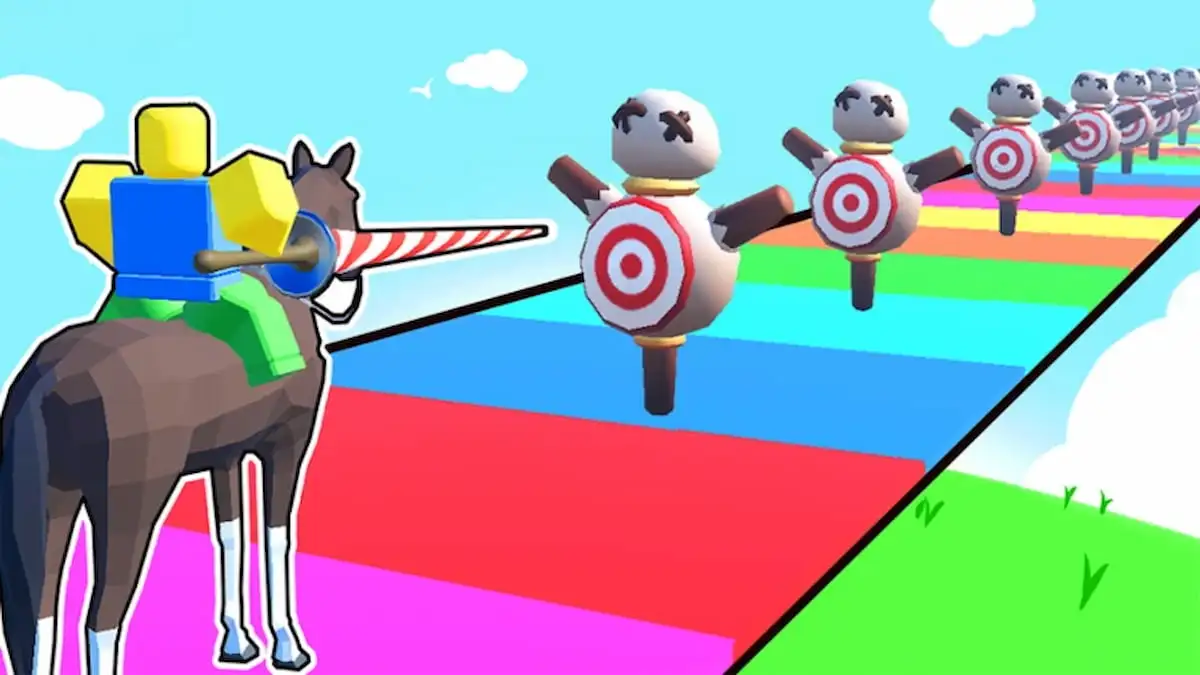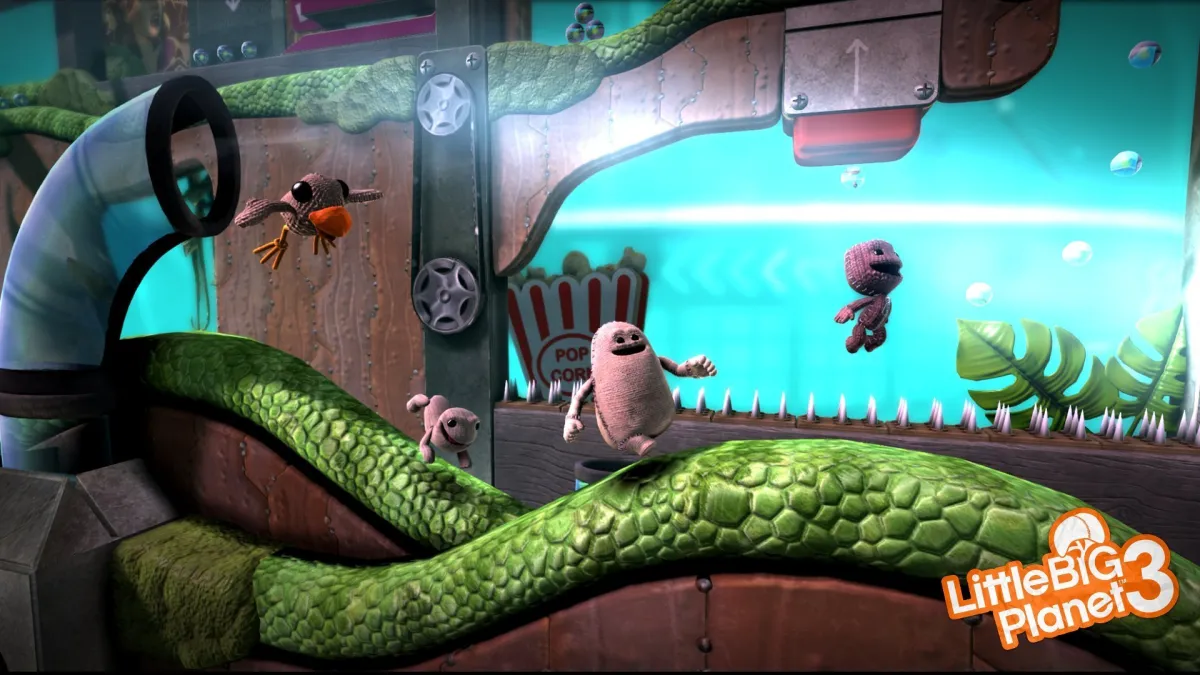
Editor’s Note: This article contains game spoilers for Spec Ops:The Line, God of War, The Darkness and Papo & Yo.
Traumatic experiences are a core part of video game stories, because peril is exciting, right? While danger and death-defying experiences are pretty standard for game narratives, an exploration of the emotional aftermath isn’t.
More and more games are trying, however. Games like Dragon Age, Mass Effect, The Last of Us, Gears of War, The Darkness, Dead Space, The Walking Dead, Heavy Rain and Silent Hill 2, for example, feature signs of trauma or traumatized characters. American McGee’s Alice and Psychonauts involve stories of overcoming childhood trauma.
But the game that comes first to mind for many when you mention PTSD is the 2012 third-person shooter Spec Ops: The Line. It tells the story of an instantly likable trio of soldiers who end up doing a lot of really bad things for really good reasons. As Yager managing director Timo Ullman put it, “the road to hell is paved with good intentions”.
Note that “the road to hell is paved with good intentions” is an artistic vision, not a clinical opinion or policy direction. That’s the difference between art and activism.

Heavily inspired by Heart of Darkness, Spec Ops: The Line is by no means a clinically accurate portrayal of PTSD. As Ullman puts it, Yager wanted to explore “what war is doing to soldiers’ minds and PTSD played a role in discussions… one will be able to recognize some of it. But of course we are no experts at that and so we also tried to stay away from just throwing it into the mix and taking advantage of the public discussion.”
Spec Ops: The Line was, therefore, an groundbreaking game regarding military PTS being used in games. The game was deservedly praised for its narrative, even though some gamers were repelled by the deliberately horrifying white phosphorous scene. That’s the thing about PTSD though: it comes from something really really bad happening.
However, a therapist I consulted for this article (who wishes to remain uncredited) suggested that in fact, Capt. Walker’s symptoms in Spec Ops could actually point to schizophrenia. Walker’s hallucinations and paranoia aren’t re-experiencing the event; they’re things that never actually happened. There is a lot of overlap between PTSD and psychosis but they’re not the same thing. However, most signs of schizophrenia begin in late teens and early adulthood, about the time people enlist in the military. So Walker’s condition could very well be complex PTSD. But it could be other things as well.
It’s important to make these distinctions when analyzing the game, but we can’t do that if devs don’t make the game in the first place. Mature, open discussion of game content can be a really good thing, because it allows people who are experts to get their message out thanks to the popularity of an artistic product. However, the media collectively has a bad habit of showing too close a connection between mental health issues and violence , so it’s important to discuss how to strike a balance.

Veterans I talked to who played the game were conflicted. “Spec Ops: The Line gave it a shot, but that game felt more like it was trying to give you PTSD through a narrow, single dimension, rather than cover the subject matter from multiple dimensions and explore more important concepts than simply a process of events that can cause PTSD,” says Michael Stevens, a veteran with PTSD. However, he also says “Games are supposed to have some element of fun in them. If a video game wants to seriously tackle PTSD, the game behind it must be driven by solid mechanics and a story that isn’t going to depress the shit out of everyone. PTSD as a central theme is a tricky space to navigate.”
Full disclosure: he took a specific shot at a pair of prominent crusaders against violent games in his comments, but I’m not reproducing them since I don’t want to start a war of my own.
“Some people dubbed [Spec Ops: the Line] as an anti-war game, and one can see it that way although it was not intended.” Ullman says. “Of course we wanted to create a game that entertains and would be able to grab peoples attention but at the same time offer something that lets the player think and reflect about.”
Fictional stories are often the first ones to humanize otherwise “scary” people, and Spec Ops: The Line definitely makes you feel for Capt. Walker’s struggles through no-win situations. As long as stories like Spec Ops: The Line help build empathy for people with PTSD without a player thinking it makes them an expert on the nuances of the condition then that’s great! PTSD and combat stress reaction have been woven through humankind’s stories long before PTSD was added to psychiatric terminologies in 1980. During the American Civil War, “soldier’s heart” was the colloquial name for a condition now linked to anxiety disorders. During and after World War I, what’s now known as PTSD was called “chronic shell shock”. I saw allusions to this in the comic and video game The Darkness, since Anthony Estacado massacres an invading army after accepting the Darkness into him, then loses his grip on sanity.

Even the ancient Greeks had an awareness that soldiers coming back from war had profound and unique challenges. This unofficial PTSD tradition in Greek myth enters video games through the God of War franchise… though creator David Scott Jaffe insists that PTSD “wasn’t anywhere near our brains” when the God of War team created Kratos’ story.
“I mean, sure, he has these traumatic events that mess with him well past the time they occurred but we looked at that as a pure dramatic device/plot device/character device and never once considered the PTSD angle,” Jaffe said. Even though it was unintentional, were Kratos a real person alive today – and if he could stop ripping off monsters’ heads long enough to talk to a shrink – he would probably be diagnosed with PTSD… okay stop laughing at the idea of Kratos in therapy long enough to hear me out on this.
Intrusive memories including flashbacks? Check. Negative feelings about himself and other people, an inability to experience positive emotions, and difficulty maintaining close relationships? Check, check and check. Irritability, angry outbursts or aggressive behavior? Always on guard for danger? Overwhelming guilt? Self-destructive behavior? … all the reasons we love Kratos, right? On top of all that, when we first meet Kratos in the original God of War, it’s right before a suicide attempt.
Characters matching the symptoms of PTSD or any other condition without being defined by those conditions are great stigma busters precisely because they remind us that a diagnosis does not make us less of a person. I did a lot better talking about my situation in the language of Kratos than clinical mumbo jumbo, because the clinical stuff can be really damned depressing. Kratos is an awesome embodiment of “keep fighting”, and I needed a lot of fight in trauma therapy.

My lofty take on God of War baffles a lot of people, especially those who dismiss the series because of the violence and sex in the games. Again, violence, and for some, sexualized violence, is an integral part of the story of a person with PTSD. Without violence or threat of violence or death, there’s no fear for one’s safety or loss of control. Without that sense of helplessness, there’s no PTSD. Kratos’ flashbacks aren’t about the war. He doesn’t give a damn how many soldiers he kills. The thing he’s stuck on is his dead wife and daughter, because he was tricked by the gods. He was helpless. God of War, in my eyes, starts where a lot of stories about traumatized people end: with a complete loss of hope. It’s one of the few games that show you can come back from that.
To attempt to tell these stories without an element of violence would not be authentic. People often cite Papo & Yo as a non-violent game, but I disagree. There’s no blood or health bar, but Monster’s rages are child abuse metaphors. The poignancy in Papo & Yo comes from the hard reality that you can’t save an abusive parent but you can’t defeat them either. While violence is not the object for the player – hence Minority Media’s products being self-described as “empathy games” – without Monster beating on a defenseless Quico when enraged, there’s no build up to the emotional payoff. Papo & Yo isn’t a game about simplistic survival. It’s about learning how to let go of trauma.

All PTSD treatments, in one way or another, are based on re-establishing control, regaining hope, and getting past being stuck. Video game technology is also helping with these treatments. Video game technology is being integrated into an evidence-based type of PTSD treatment, prolonged exposure therapy, through the Medical Virtual Reality research at USC’s Institute for Creative Technologies. Psychologist Dr. Albert “Skip” Rizzo is the director of this program, which uses the Unity engine to build custom virtual reality simulations. The program’s Virtual Iraq and Virtual Afghanistan programs have shown extremely good results producing, as the program literature says, “meaningful reduction in PTS symptoms.”
Unlike a traditional video game where the player is following the creator’s story, prolonged exposure simulations are built based on a person’s own experiences. The first few appointments are spent telling the story of the traumatic event so a simulation, complete with sights, sounds, and eight different smells (like burning rubber, trash, and diesel fuel), can be built to those specifications. Advanced systems even have subwoofers underneath the patient to simulate the vibrations of a car motor or the impact of an explosion.

This type of therapy can be uniquely beneficial to people who have grown up with video games, and therefore find them more familiar and less stigmatized than talk therapy. “I personally believe that you’re breaking the seal, in a sense, and you’re getting somebody to feel comfortable and safe about talking about their traumatic experience, and that extends into how they think about their traumatic experience.” Rizzo explains. “There’s a healing process involved in that. If you don’t talk about something in a safe environment, there’s an element that holds you back.”
More clinically, prolonged exposure therapy “breaks the association between stimulus cues and the real experience of threat.” Rizzo provides the example of “someone starts to feel like they can’t go down a roadway because they might see trash,and that trash reminds them of a horrible event that killed their buddy.”
The VR therapy works by gradually increasing the exposure to the simulation while a clinician monitors the patient to make sure they don’t get “over amped”. In some more advanced systems, biofeedback tools measure things like heart rate to determine if things are getting too intense. An average course of VR prolonged exposure therapy is nine to twelve weekly sessions
This element of the therapy seems to undermine the primary criticism of VR prolonged exposure therapy: that the added stimulus is “too much” for more fragile patients. “When people leave treatment prematurely they’re not any worse than when they came in the door.” Rizzo insists. That being said, patients are cautioned, in advance, “It’s gonna get harder before it gets easier.”

“There’s a lot of promise in some alternatives but in the end you’ve got to roll up your sleeves and address the trauma.” Rizzo explains. “No therapist wants to feel like they’re making their patient feel pain. But a certain amount of anxiety raising at a moderate level… then it gets easier. Then they do it again and they’re a little less anxious.”
A sure mark of success in the program is the expansion of it. The original four-scenario version is in 70 centers across the United States. The improved 14-scenario version is in over 20 locations and one base in Germany. A Canadian version is rolling out any day, thanks to funding from the True Patriot Love Foundation.
Furthermore, Oakley Sunglasses and the Infinite Hero Foundation provided the money to fund a Combat Medic expansion. Combat medic simulations require “a bit more blood and guts than we would normally have,” Rizzo explains. “You don’t want to habituate people to things they should naturally be uptight about. But with combat medics that’s part of the scenery.”
Rizzo’s team also has a Military Sexual Trauma (MST) expansion currently in testing which also required a lot of new components. “Most military sexual trauma doesn’t happen in the trenches of Afghanistan. It happens in [places like] barracks.” Rizzo says. “These bases… they could be in Oklahoma or Afghanistan it doesn’t make a difference… it forced us to build a lot of civilian content.”

If they get good results with the MST content, it’s a “smooth transition” to work with survivors of civilian sexual trauma. “Just so you know,” Rizzo adds, “we don’t simulate rape. We simulate the context.” Getting into cars, bars, those sorts of environments.
To make this transition to civilian use less cost-prohibitive, Rizzo’s team is working with the Samsung VR ecosystem, specifically the Gear headset and Galaxy Note devices. Using this tech, civilian specialists in Prolonged Exposure therapy could invest in the VR tools for a relatively low cost compared to the military units.
But there’s one more section of the military Rizzo still wants to help: Vietnam veterans. According to him, 69,000 PTS claims from Iraq and Afghanistan came through Veterans Affairs in 2013. During the same time period, 62,000 claims were logged connected to Vietnam.
“When people get older other primary conditions induce the onset. There’s more emotional vulnerability when you’re older.” He details. “Others hit an existential wall and just want to be done with it, sort this stuff out, and live their last years in peace.”
Sadly, there’s far less political will to fund help for these veterans. Cynics in the VA even hint that Vietnam vets just want to pad their retirement. So Rizzo is turning to crowdfunding to make Virtual Vietnam happen. We’ll update readers when that campaign goes live.
Both artistic endeavours and clinical projects can, and are, using video game technology to reach people with PTSD who may not seek help through other means. In this way, video games and video game technology has helped provide real support and treatment to people with PTSD. But the community can help in even more ways, and that’s coming up in the next and final part of this series!
(Note: if you’re a veteran interested in undergoing virtual reality prolonged exposure therapy, inquire at your local VA or contact the program)
Part four of the series will post next Wednesday at 3 p.m.



